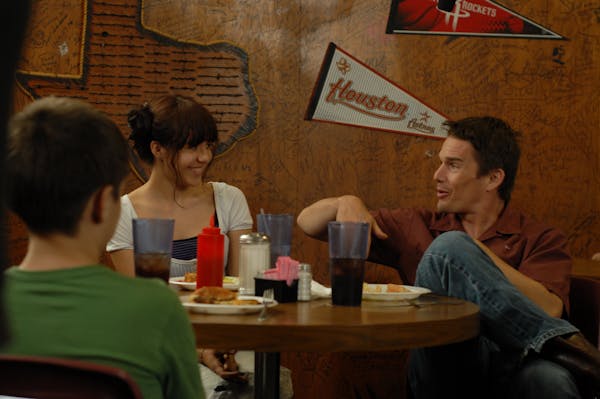"Selma" has deservedly received an Academy Awards nomination for best picture. Because of the movie's historical significance, it also deserves close examination.
The movie was filmed on-site, and portrays events very accurately — just not perfectly so. A rabbi who was in the front line of the real final march is not depicted. Conversations are imagined in order to provide important information. Out of necessity, the movie compresses situations. For example, the film shows people watching a live, nationally televised broadcast of the march on "Bloody Sunday," March 7, 1965. But in fact, the photos and movies of horrible beatings at the bridge were first shown on TV that evening, not at the very moment they happened. Nevertheless, the scenes were incredibly disturbing for people watching that night.
A significant concern is that a film emphasizing injustice could have done more justice to three important leaders of the time.
In 2005, my wife and I visited Selma, Ala. We met and talked at length with James Bevel, one of the civil-rights organizers featured in the movie (played by the musician named Common). The film misleads viewers to assume a march all the way to Montgomery was the Rev. Martin Luther King Jr.'s idea. It was really Bevel's. That's an important part of Bevel's legacy, even though that legacy is flawed. "Selma, 1965" (a very thorough book written by Charles Fager) and Wikipedia both confirm Bevel's ingenious plan and its obvious importance in the history of our country.
There's no evidence that President Lyndon Johnson spoke harshly to Dr. King about Selma, as depicted in the movie. However, the president was initially concerned about possible and serious public opposition — even in the North — toward a proposed voting-rights act. Such an act might have been too much for people to absorb on the heels of the precedent-shattering, anti-segregation Civil Rights Act of 1964. Keep in mind that it was Robert Kennedy, not Johnson, who had allowed the FBI to investigate King. Let's not overlook that LBJ had already proven to be a courageous and leading advocate of civil rights. In 1957, as Senate majority leader, he ushered a weak but precedent-setting civil-rights bill past his fellow Southern lawmakers. As vice president, he gave an impromptu, unrecorded and genuinely emotional speech in favor of civil rights to a gathering of college students that I attended in Washington, D.C. I will never forget that. And before Johnson won his presidential election in 1964, he asked Attorney General Nicolas Katzenbach to develop a bill opposing so-called literacy tests — tests with impossibly difficult questions for individuals who wanted to qualify for voter registration. Of course, only blacks were asked the questions.
The film even misrepresents Dr. King at one point. When he turned back during the second of three marches over the bridge, he did not feel defeated, but he had felt a dilemma. The hundreds of people who had traveled to Selma to support the blacks immediately after Bloody Sunday had added to overwhelming momentum for a follow-up march. He didn't want to refuse them. At the same time, King didn't want to alienate U.S. District Judge Frank Johnson. He was the movement's best hope for an independent Southern judge in the future. Frank Johnson wanted time for a legal hearing before ordering law enforcement to not block another march — one that would be only two days after the first and would be permitted to go all the way to Montgomery. King decided to go ahead with the event while waiting for the judge's decision. When troopers did move out of the way after the crowd reached the far end of the bridge (the marchers did not stop at its crest, as depicted in the movie), King didn't take the bait. He knew the danger his people would face, if there would be no chance of official protection along the highway ahead. He also knew his people had not had time to prepare for a 54-mile, five-day walk. So he did lead the crowd back, knowing what a positive it was that the troopers had not attacked. Of course, the fact that there were so many whites among the marchers undoubtedly helped.
For a concise, fully accurate and stirring documentary of events related to the Selma campaign, go online to YouTube. Type in "Eyes on the Prize (VI) — Bridge to Freedom, 1965." Just open it and watch.
Jim Bartos lives in Brooklyn Park.

